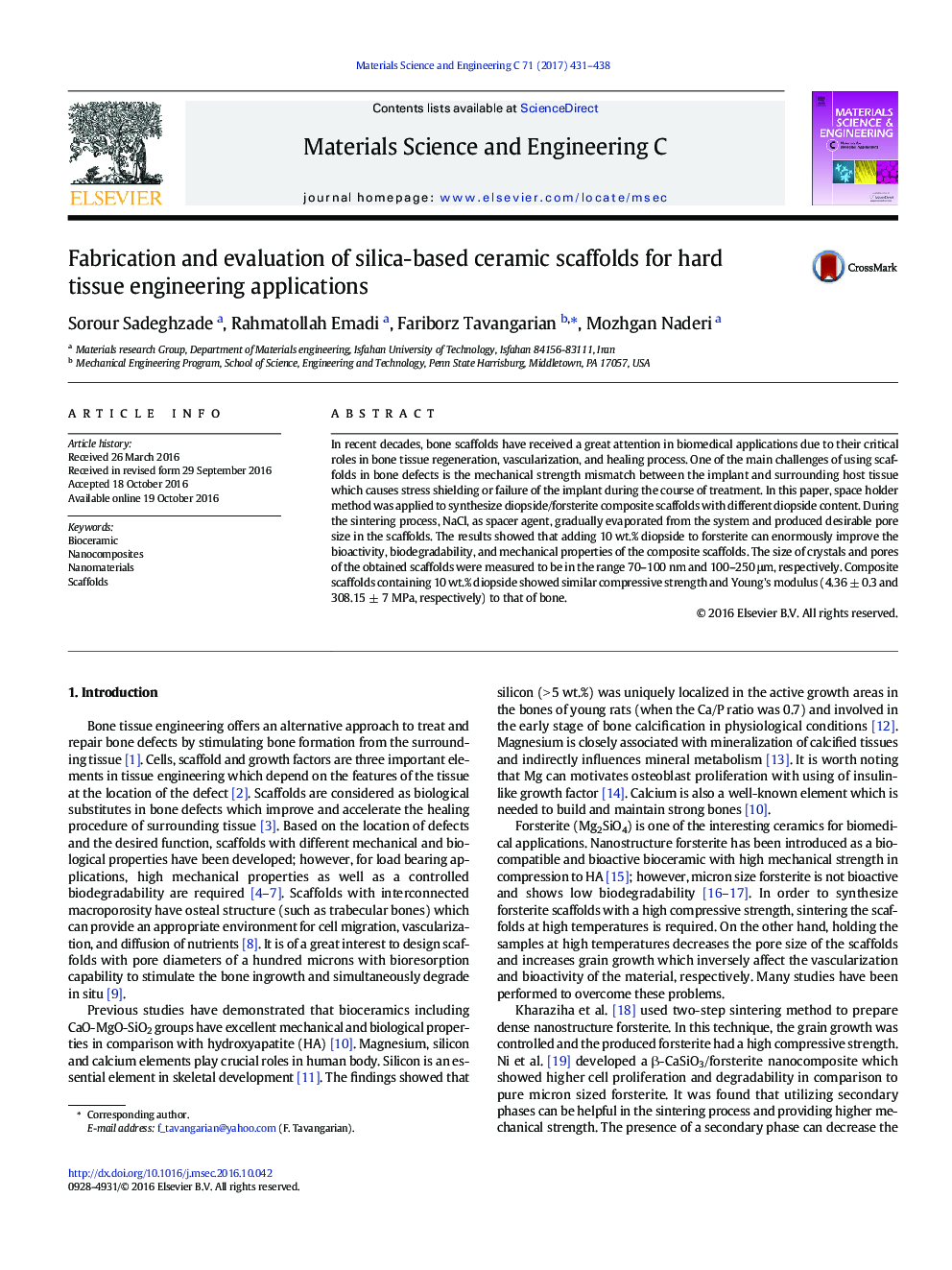| Article ID | Journal | Published Year | Pages | File Type |
|---|---|---|---|---|
| 5434647 | Materials Science and Engineering: C | 2017 | 8 Pages |
â¢Diopside/forsterite nanocomposite scaffolds were synthesized by space holder method.â¢Diopside acts as a sintering aid in composites with low diopside content.â¢Diopside increased the compressive strength and bioactivity of the forsterite scaffolds.â¢The composite containing 10 wt.% diopside was chosen as the optimum scaffold.
In recent decades, bone scaffolds have received a great attention in biomedical applications due to their critical roles in bone tissue regeneration, vascularization, and healing process. One of the main challenges of using scaffolds in bone defects is the mechanical strength mismatch between the implant and surrounding host tissue which causes stress shielding or failure of the implant during the course of treatment. In this paper, space holder method was applied to synthesize diopside/forsterite composite scaffolds with different diopside content. During the sintering process, NaCl, as spacer agent, gradually evaporated from the system and produced desirable pore size in the scaffolds. The results showed that adding 10 wt.% diopside to forsterite can enormously improve the bioactivity, biodegradability, and mechanical properties of the composite scaffolds. The size of crystals and pores of the obtained scaffolds were measured to be in the range 70-100 nm and 100-250 μm, respectively. Composite scaffolds containing 10 wt.% diopside showed similar compressive strength and Young's modulus (4.36 ± 0.3 and 308.15 ± 7 MPa, respectively) to that of bone.
